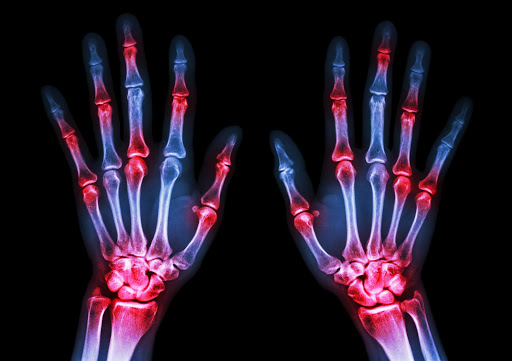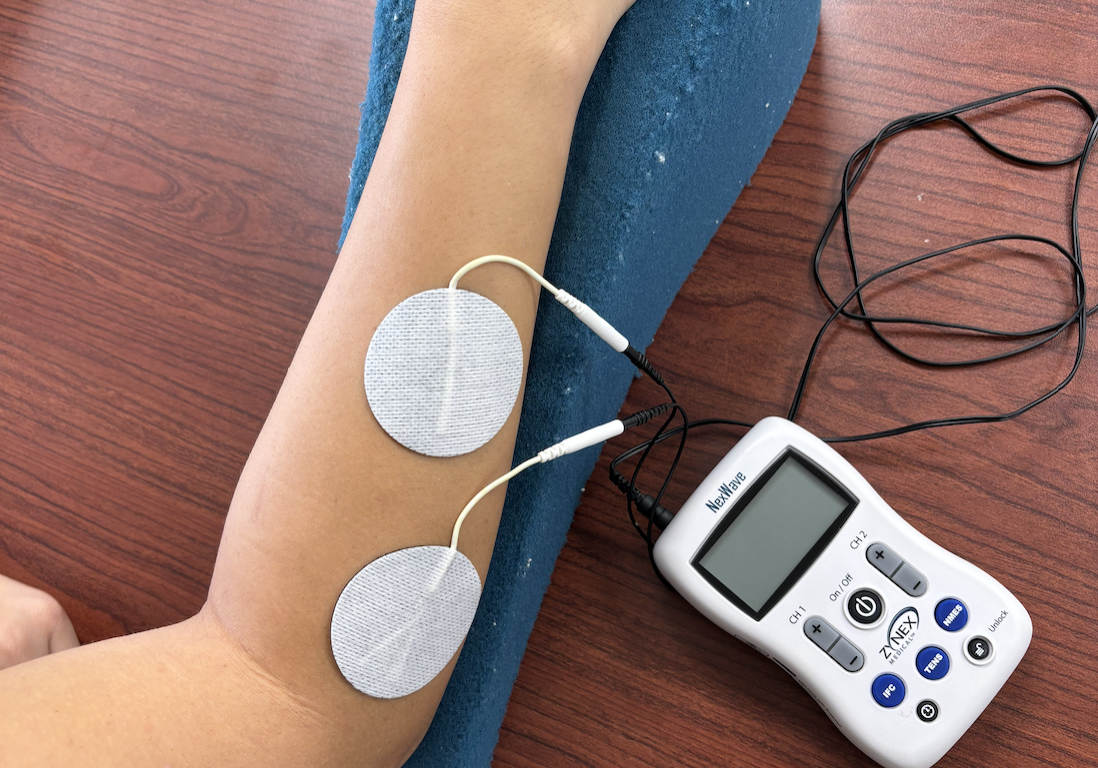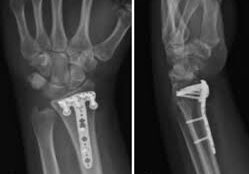7 Tips to Help your Patients Manage Hand Osteoarthritis
Filed under Treatments
Introduction
Osteoarthritis in the hands can be frustrating and debilitating. As a form of degenerative joint disease, it causes stiffness, pain, swelling, and reduced grip strength—making daily tasks like writing, opening jars, and typing feel exhausting. Fortunately, there’s a proven holistic approach centered on hand therapy for arthritic hands. This includes tailored exercises, targeted splinting, ergonomic adaptations, and lifestyle modifications—all designed to support joint health and preserve function. In this comprehensive guide, we’ll dive into 9 essential tips that therapists and caregivers can use to help manage hand osteoarthritis effectively.

1. Establish a Balanced Daily Exercise Routine
Regular, gentle exercise is key to maintaining flexibility and reducing joint stiffness in arthritic hands—critical components of successful hand therapy for arthritic hands.
- Range-of-motion (ROM) exercises – Begin each day with light ROM movements: open and close your hand, gently spread fingers apart and bring them back together. These exercises help maintain joint mobility and combat stiffness.
- Functional tasks – Everyday tasks, like pouring water or folding towels, double as therapeutic strengthening exercises.
- Aerobic and whole-body fitness – Low-impact activities such as swimming, brisk walking, or cycling for 20 to 30 minutes per day support circulation and reduce inflammation throughout the body.
Tip: Warm up your hands with a few gentle stretches or warm towels before exercising to improve comfort and effectiveness.
2. Implement Anti-Inflammatory Nutrition
What you eat plays a powerful role in managing inflammation and pain:
- Vitamin C-rich foods – Citrus fruits, strawberries, bell peppers, and broccoli support collagen production and joint health.
- Omega-3 fatty acids – Found in fatty fish (salmon, mackerel, sardines), flaxseeds, walnuts, and chia seeds; these fatty acids help suppress inflammation and may reduce joint stiffness and pain.
- Antioxidant-rich produce – Colorful fruits and vegetables—especially berries, leafy greens, and beets—provide antioxidants that protect joints from oxidative stress.
- Turmeric, ginger, and spices – These have natural anti-inflammatory benefits and can be added to meals or beverages.
- Whole grains and lean protein – Provide energy and support tissue repair; choose brown rice, oats, turkey, chicken, beans, and lentils.
- Hydration – Stay hydrated to support joint lubrication and mobility.
Aim for a colorful plate at each meal—this supports overall joint health and complements your hand therapy for arthritic hands regimen.
3. Master Inflammation Management
Inflammation can worsen pain, reduce range of motion, and accelerate joint damage. Knowing how to respond during flare-ups is a hallmark of successful hand therapy for arthritic hands.
Identifying flare-ups:
- Symptoms include increased swelling, redness, warmth, stiffness, and sharp or throbbing pain.
- Symptom diaries (more on this in Tip 9) help recognize triggers and patterns.
Immediate steps for flare-ups:
- Rest – Temporarily reduce hand use on painful tasks until inflammation subsides.
- Cold therapy – Apply ice packs wrapped in a cloth for 10–15 minutes to reduce swelling.
- Compression – Use light compression gloves to provide gentle stabilization without limiting circulation.
- Elevation – Prop your hand on a pillow or armrest to reduce swelling.
Gradual return:
- After a flare-up subsides, reintroduce gentle motion.
- Use supportive splints (details below) during activities that stress joints prone to pain.
4. Invest in Custom Splints & Orthoses
Splinting is a cornerstone of hand therapy for arthritic hands, providing targeted support to relieve stress on damaged joints—especially during high-impact activity.
- Thumb (CMC) OA splints – Immobilize the base of the thumb to reduce pinch pain and stress on the carpometacarpal joint. Custom-made thermoplastic splints offer tailored support.
- DIP and PIP joint supports – Gel sleeves or finger support tubes help stabilize small joints that are inflamed or painful.
- Wrist orthoses – Provide added stability during lifting or forceful gripping tasks.
- Night splints – Prevent contractures and stiffness overnight by keeping the hand in a neutral, protected position.
- Adaptive splints – Some patients may benefit from dynamic splints or buddies that limit motion outside a safe range.
Splint use should be individualized: wear them during aggravating activities or flare-ups, not 24/7. Your therapist will help you choose the right style and schedule.
5. Apply Principle: Work Smarter, Not Harder
Using ergonomic strategies conserves energy and reduces joint strain:
- Use larger joints – Lift items using your palm and forearm instead of pinching with fingertips.
- Enlarge grasp area – Use jar openers, utensil grips, padded handles, or large ergonomic pens.
- Avoid tight pinches – Hold books or plates with open hands or between the thumb and palm rather than just thumb and index finger.
- Task simplification – Break bigger jobs into smaller parts. Use a rolling cart to transport heavy items instead of carrying them.
- Leverage and body mechanics – Lean into tasks rather than gripping tightly; let your body weight help.
- Assistive devices – Include sock aids, reachers, Velcro closures, button pulls, jar grippers, and electric jar openers.
Integrating these tools and strategies into daily life significantly reduces repetitive stress and supports your broader hand therapy for arthritic hands program.
6. Honor Your Pain (Respect Pain Signals)
Pain serves as a red flag—it’s your body’s way of saying a joint is under too much stress. In hand therapy for arthritic hands, understanding and responding to pain is key.
Pain management principles:
- Stop or adjust painful tasks – Discontinue activities that trigger sharp or persistent pain.
- Pace your activities – Alternate demanding tasks with gentle ones. Don’t overdo it on “good days.”
- Self-checks – Ask yourself during a task: “Is this comfortable? Is the pain tolerable?” If not, stop or adapt.
- Know the difference – Mild achiness during gentle movement is okay, but sharp, shooting pain means you need to rest.
- Journal your pain – Document how pain behaves after different tasks. This helps you and your therapist tailor your plan.
By listening and adapting, you can minimize flare-ups and protect your joints over time.
7. Use Heat & Cold Therapies Strategically
Thermotherapy plays a vital role in soothing symptoms and improving movement—key components of hand therapy for arthritic hands.
Heat first:
- Warmth before exercise helps relax muscles, increase blood flow, and ease stiffness.
- Try warm water soaks, microwavable heat packs, paraffin baths (if available), or thick heated towels for 10–15 minutes.
Cool it afterward:
- If joints feel swollen or hot post-exercise, switch to cold therapy.
- Use ice packs wrapped in cloth for 10–15 minutes to relieve inflammation.
At-home routines:
- Incorporate heat-cold routines into daily planning—heat in morning before tasks, cold in evenings after activity.
Remember to monitor skin comfort and take breaks to avoid overdrying or chilling.

8. Explore Complementary Therapies
Beyond exercise and splints, several additional treatments enhance hand therapy for arthritic hands when thoughtfully integrated:
- Massage and manual therapy – A certified hand therapist can mobilize joints and soft tissue to relieve stiffness and tension.
- Paraffin wax treatments – Provide deep, soothing heat and effective moisturizing for skin comfort.
- Contrast baths – This physical modality can decrease pain and enhance range of motion.
- Topical agents – Non-prescription creams or gels with menthol, capsaicin, or arnica may add temporary relief.
- Mind–body techniques – Mindfulness, meditation, and breathing exercises help reduce stress and modulate pain perception.
- Occupational therapy (OT) – OTs focus on fine motor tasks such as buttoning, writing, and typing—helping you adapt movement patterns.
- Support groups – Emotional support, coping strategies, and community can boost adherence and overall well-being.
Always discuss complementary options with your therapist to ensure they align with your overall care plan.
9. Track Patterns with a Daily Diary
A simple diary is a powerful tool in hand therapy for arthritic hands—helping you spot activity, diet, and symptom relationships.
What to record daily:
- Activities you did (e.g. typing, cooking, gardening)
- Meals/snacks (noting possible trigger foods)
- Pain level (use a 0–10 scale, morning/evening)
- Swelling/temp/redness of affected joints
- Splint use (what type, when, how long)
- Use of heat or cold interventions
- Sleep quality and stress level
After a week or two, patterns will emerge—like increased pain following berry desserts or long sessions on a smartphone. This insight empowers more informed lifestyle adjustments and treatment decisions.
10. Aim for Long-Term Self-Management & Education
Effective hand therapy for arthritic hands is a journey. Educating and empowering patients (or yourself) is as crucial as the hands-on treatment.
- Understand the disease – Learn what osteoarthritis is, how it progresses, and what management strategies exist.
- Set realistic goals – Focus on improved function (e.g., being able to hold a toothbrush comfortably), not just pain reduction.
- Build regular check-ins – Schedule follow-up visits or telehealth sessions to track progress and update care plans.
- Be flexible – Additionally to splints, techniques, or modalities, adjust strategies as symptoms or life demands change.
- Celebrate small wins – A pain-free morning, completing a puzzle, or making dinner with comfort all count toward progress.
- Stay motivated – Keep adapting as you learn—what you can do in Year 1 may improve by Year 3.
Ultimately, the goal of hand therapy for arthritic hands is to preserve independence, comfort, and enjoyment of daily life.
Frequently Asked Questions (FAQs)
Q1: Why is hand therapy for arthritic hands more effective than just resting?
A: Rest offers short-term relief, but without movement and strengthening, joints stiffen and muscles weaken. Therapy encourages gentle mobilization, preserves function, and improves joint stability.
Q2: How often should I do exercises and use splints?
A: Ideally, perform ROM and strengthening exercises 1–2 times daily. Splints are best worn during activities that aggravate joints or during flare-ups, not continuously.
Q3: Can diet alone fix arthritic hand pain?
A: No, but an anti-inflammatory, nutrient-rich diet complements therapy. It won’t reverse cartilage loss, but it helps reduce systemic inflammation and supports joint health.
Q4: Are there supplements that help with hand osteoarthritis?
A: Omega‑3 supplements may help, but always talk to your doctor. Supplements aren’t regulated the same way as medications, so quality varies.
Q5: What’s the difference between heat and cold therapy?
A: Use heat to loosen stiff joints before activity; cold to reduce swelling and numb pain after. Use each mindfully based on symptoms that day.
Q6: When should I see a hand therapist?
A: Early is best—if discomfort, stiffness, or swelling begins to impact daily tasks for more than a few weeks. A therapist can make personalized plans to slow progression and optimize functioning.

Conclusion
Focusing on hand therapy for arthritic hands means embracing an active, evidence-based, and multi-dimensional approach—combining exercise, splinting, ergonomic tools, mindful pain management, complementary practices, and self-monitoring. By adopting these 9 strategies, you can significantly reduce pain, improve flexibility and strength, and preserve your ability to perform everyday activities. With early, consistent care and self-awareness, arthritic hands can remain functional, comfortable, and even resilient over time.
Embrace these techniques, partner with skilled therapists, track what works, and build your own personalized toolkit. You deserve hands that work for you—not against you.
2 Comments
Leave a Comment
More To Read
Radial Nerve Palsy: A Paralysis Causing Wrist Drop
Radial Nerve Palsy- Treatment
Read MoreDoes Obesity or Smoking change the outcomes for Distal Radius Fractures
Hall, Matthew J., Ostergaard, P., Dowlatshahi, A., Harper, C., Earp, B. Rozental, T. (2019). The Impact of Obesity and Smoking on Outcomes After Volar Plate Fixation of Distal Radius Fractures. The Journal of Hand Surgery. In Press, Corrected Proof, Available online 31 October 2019. Doi: https://doi.org/10.1016/j.jhsa.2019.08.017 The Skinny- Distal radius fractures are one of the…
Read MoreVagus Nerve Stimulation (VNS) for Various Etiologies
What is it: Vagus nerve stimulation (VNS) is a medical treatment that uses a device to deliver electrical impulses to the vagus nerve, which runs on both sides of the body from the lower brain through the neck to the chest and stomach. The left vagus nerve is typically used for this procedure, as simulating…
Read MoreSign-up to Get Updates Straight to Your Inbox!
Sign up with us and we will send you regular blog posts on everything hand therapy, notices every time we upload new videos and tutorials, along with handout, protocols, and other useful information.






Thank you very much! I always thought, how can I tell to my patients all this information very short and understandable! Thank you for your tips!!
Great Post! These tips and providing comprehensive support and guidance, healthcare professionals can help patients effectively manage hand osteoarthritis and improve their overall quality of life. Collaboration between patients and healthcare providers is essential to developing personalized treatment plans that address the unique needs and goals of each individual.